Hfa25tb60s-RevA
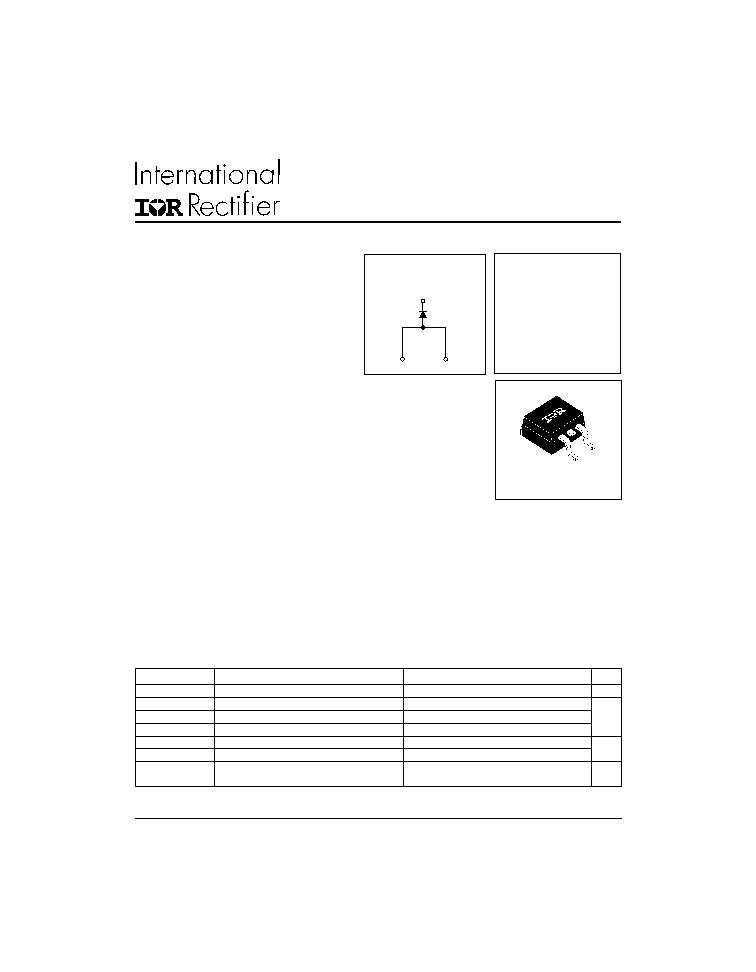
Bulletin PD -20616 rev. A 12/00
· Ultrafast Recovery
· Ultrasoft Recovery
· Very Low
I
RRM
· Very Low
Q
rr
· Specified at Operating Conditions
Benefits
· Reduced RFI and EMI
· Reduced Power Loss in Diode and Switching
Transistor
· Higher Frequency Operation
· Reduced Snubbing
· Reduced Parts Count
Features
Description
International Rectifier's HFA25TB60S is a state of the art ultra fast recovery
diode. Employing the latest in epitaxial construction and advanced processing
techniques it features a superb combination of characteristics which result in
performance which is unsurpassed by any rectifier previously available. With
basic ratings of 600 volts and 25 amps continuous current, the HFA25TB60S
is especially well suited for use as the companion diode for IGBTs and
MOSFETs. In addition to ultra fast recovery time, the HEXFRED product line
features extremely low values of peak recovery current (I
RRM
) and does not
exhibit any tendency to "snap-off" during the t
b
portion of recovery. The
HEXFRED features combine to offer designers a rectifier with lower noise and
significantly lower switching losses in both the diode and the switching
transistor. These HEXFRED advantages can help to significantly reduce
snubbing, component count and heatsink sizes. The HEXFRED HFA25TB60S is
ideally suited for applications in power supplies and power conversion systems
(such as inverters), motor drives, and many other similar applications where
high speed, high efficiency is needed.
Ultrafast, Soft Recovery Diode
HEXFRED
TM
HFA25TB60S
V
R
= 600V
V
F
(typ.)* = 1.3V
I
F(AV)
= 25A
Q
rr
(typ.)= 112nC
I
RRM
= 10A
t
rr
(typ.)
= 23ns
di
(rec)M
/dt (typ.) = 250A/µs
Parameter
Max.
Units
V
R
Cathode-to-Anode Voltage
600
V
I
F
@ T
C
= 100°C
Continuous Forward Current
25
I
FSM
Single Pulse Forward Current
225
A
I
FRM
Maximum Repetitive Forward Current
100
P
D
@ T
C
= 25°C
Maximum Power Dissipation
125
P
D
@ T
C
= 100°C
Maximum Power Dissipation
50
T
J
Operating Junction and
T
STG
Storage Temperature Range
Absolute Maximum Ratings
-55 to +150
W
°C
1
* 125°C
1
+
3
2
BASE
(N/C)
(A)
(K)
_
D
2
Pak
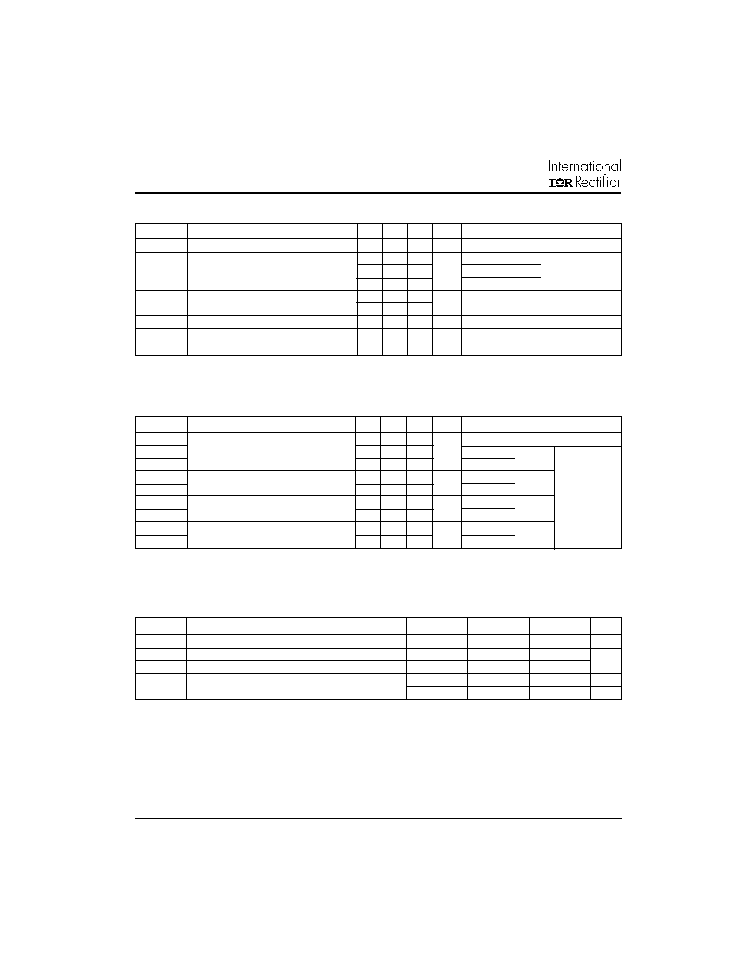
HFA25TB60S
Bulletin PD-20616 rev. A 12/00
2
Parameter
Min. Typ. Max. Units
Test Conditions
V
BR
Cathode Anode Breakdown Voltage
600
V
I
R
= 100µA
1.3
1.7
I
F
= 25A
1.5
2.0
V
I
F
= 50A
1.3
1.7
I
F
= 25A, T
J
= 125°C
1.5
20
V
R
= V
R
Rated
600 2000
T
J
= 125°C, V
R
= 0.8 x V
R
Rated
D
Rated
C
T
Junction Capacitance
55
100
pF
V
R
= 200V
Measured lead to lead 5mm from
package body
Electrical Characteristics @ T
J
= 25°C (unless otherwise specified)
L
S
Series Inductance
8.0
nH
See Fig. 3
See Fig. 2
See Fig. 1
V
FM
Max Forward Voltage
µA
Max Reverse Leakage Current
I
RM
Parameter
Min. Typ. Max. Units Test Conditions
t
rr
Reverse Recovery Time
17
I
F
= 1.0A, di
f
/dt = 200A/µs, V
R
= 30V
t
rr1
28
42
ns
T
J
= 25°C
t
rr2
38
57
T
J
= 125°C
I
F
= 4.0A
I
RRM1
Peak Recovery Current
2.9
5.2
T
J
= 25°C
I
RRM2
3.7
6.7
T
J
= 125°C
V
R
= 200V
Q
rr1
Reverse Recovery Charge
40
60
T
J
= 25°C
Q
rr2
70
105
T
J
= 125°C
di
f
/dt = 200A/µs
di
(rec)M
/dt1
Peak Rate of Fall of Recovery Current
280
T
J
= 25°C
di
(rec)M
/dt2
During t
b
235
T
J
= 125°C
Dynamic Recovery Characteristics @ T
J
= 25°C (unless otherwise specified)
A/µs
nC
A
See Fig. 5 & 6
See Fig. 7
See Fig. 8
Parameter
Min.
Typ.
Max.
Units
T
lead
!
Lead Temperature
300
°C
R
thJC
Thermal Resistance, Junction to Case
1.0
R
thJA
"
Thermal Resistance, Junction to Ambient
80
Wt
Weight
2.0
g
0.07
(oz)
Thermal - Mechanical Characteristics
K/W
!
0.063 in. from Case (1.6mm) for 10 sec
"
Typical Socket Mount
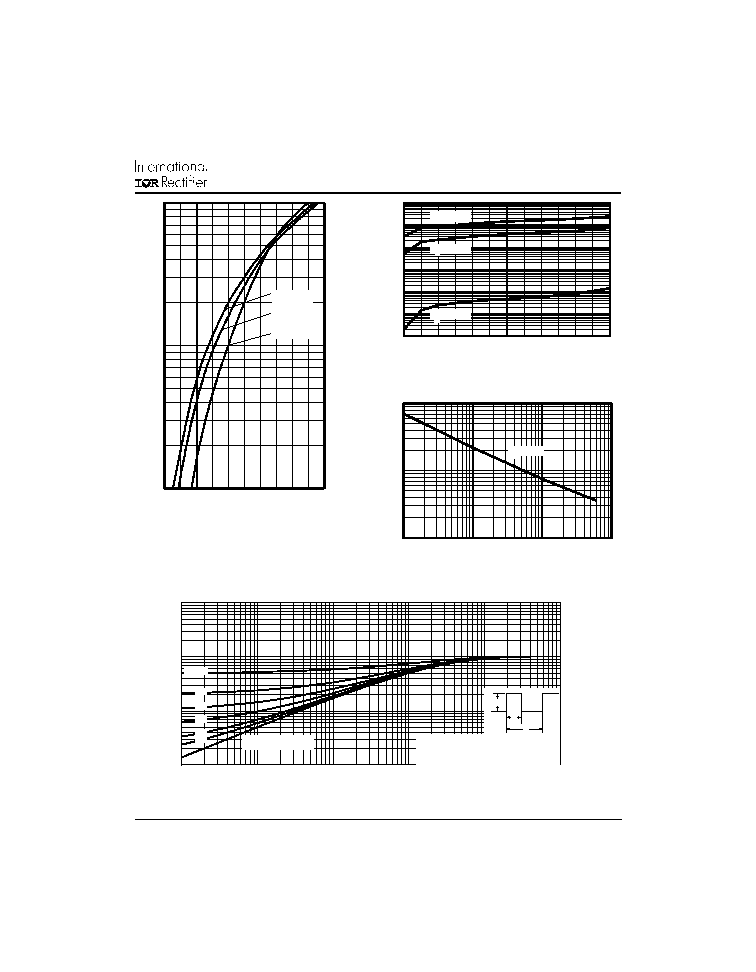
HFA25TB60S
Bulletin PD-20616 rev. A 12/00
3
0.01
0.1
1
10
0.00001
0.0001
0.001
0.01
0.1
1
Notes:
1. Duty factor D = t / t
2. Peak T = P
x Z
+ T
1
2
J
DM
thJC
C
P
t
t
DM
1
2
t , Rectangular Pulse Duration (sec)
Thermal Response
(Z )
1
thJC
0.01
0.02
0.05
0.10
0.20
D = 0.50
SINGLE PULSE
(THERMAL RESPONSE)
Fig. 4 - Maximum Thermal Impedance Z
thjc
Characteristics
Fig. 2 - Typical Reverse Current vs. Reverse
Voltage
Fig. 3 - Typical Junction Capacitance vs.
Reverse Voltage
Fig. 1 - Maximum Forward Voltage Drop
vs. Instantaneous Forward Current
1
10
100
0.6
1.0
1.4
1.8
2.2
2.6
FM
T = 150°C
T = 125°C
T = 25°C
J
J
J
A
Forward Voltage Drop - V (V)
0.01
0.1
1
10
100
1000
10000
0
100
200
300
400
500
600
R
T = 150°C
A
T = 125°C
T = 25°C
J
J
J
Reverse Voltage - V (V)
10
100
1000
1
10
100
1000
T = 25°C
J
Reverse Voltage - V (V)
R
A
A
Instantaneous Forward Current - I
F
(A)
Reverse Current - I
R
(µA)
Junction Capacitance -C
T
(pF)
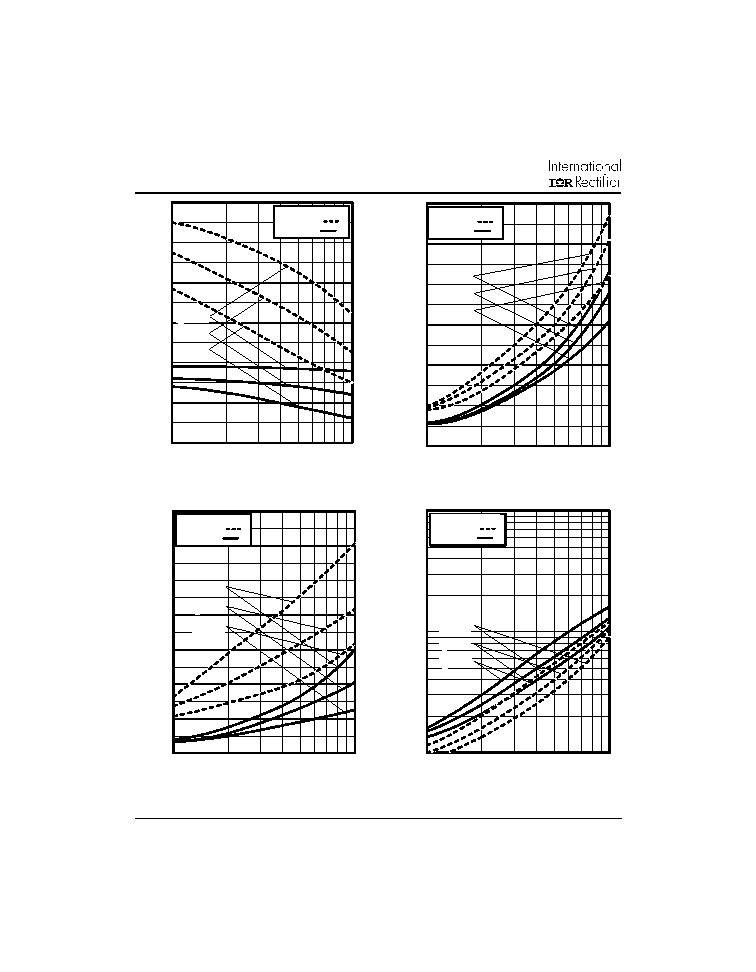
HFA25TB60S
Bulletin PD-20616 rev. A 12/00
4
Fig. 7 - Typical Stored Charge vs. di
f
/dt
Fig. 8 - Typical di
(rec)M
/dt vs. di
f
/dt
Fig. 5 - Typical Reverse Recovery vs. di
f
/dt
Fig. 6 - Typical Recovery Current vs. di
f
/dt
0
5
10
15
20
25
30
100
1000
f
di /dt - (A/µs)
A
I = 50A
I = 25A
I = 10A
V = 200V
T = 125°C
T = 25°C
R
J
J
F
F
F
20
40
60
80
100
120
140
100
1000
f
di /dt - (A/µs)
A
I = 50A
I = 25A
I = 10A
F
F
F
V = 200V
T = 125°C
T = 25°C
R
J
J
100
1000
10000
100
1000
f
di /dt - (A/µs)
A
I = 50A
I = 25A
I = 10A
F
F
F
V = 200V
T = 125°C
T = 25°C
R
J
J
0
200
400
600
800
1000
1200
1400
100
1000
f
di /dt - (A/µs)
A
I = 50A
I = 25A
I = 10A
V = 200V
T = 125°C
T = 25°C
R
J
J
F
F
F
trr-
(nC)
Irr-
(
A)
Qrr-
(nC)
di (rec) M/dt-
(A /µs)
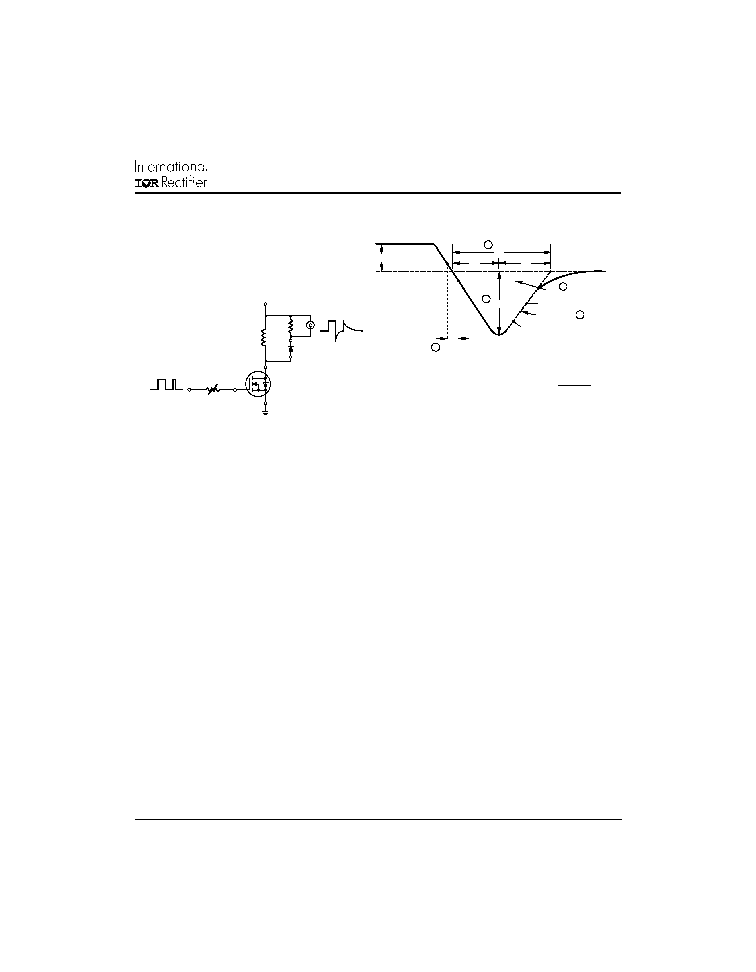
HFA25TB60S
Bulletin PD-20616 rev. A 12/00
5
4. Q
rr
- Area under curve defined by t
rr
and I
RRM
t
rr
X I
RRM
Q
rr
=
2
5. di
(rec)M
/dt - Peak rate of change of
current during t
b
portion of t
rr
Fig. 10 - Reverse Recovery Waveform and
Definitions
Fig. 9 - Reverse Recovery Parameter Test
Circuit
t
a
t
b
t
rr
Q
rr
I
F
I
RRM
I
RRM
0.5
di(rec)M/dt
0.75 I
RRM
5
4
3
2
0
1
di /dt
f
1. di
f
/dt - Rate of change of current
through zero crossing
2. I
RRM
- Peak reverse recovery current
3. trr - Reverse recovery time measured
from zero crossing point of negative
going I
F
to point where a line passing
through 0.75 I
RRM
and 0.50 I
RRM
extrapolated to zero current
REVERSE RECOVERY CIRCUIT
IRFP250
D.U.T.
L = 70µH
V = 200V
R
0.01
G
D
S
dif/dt
ADJUST




